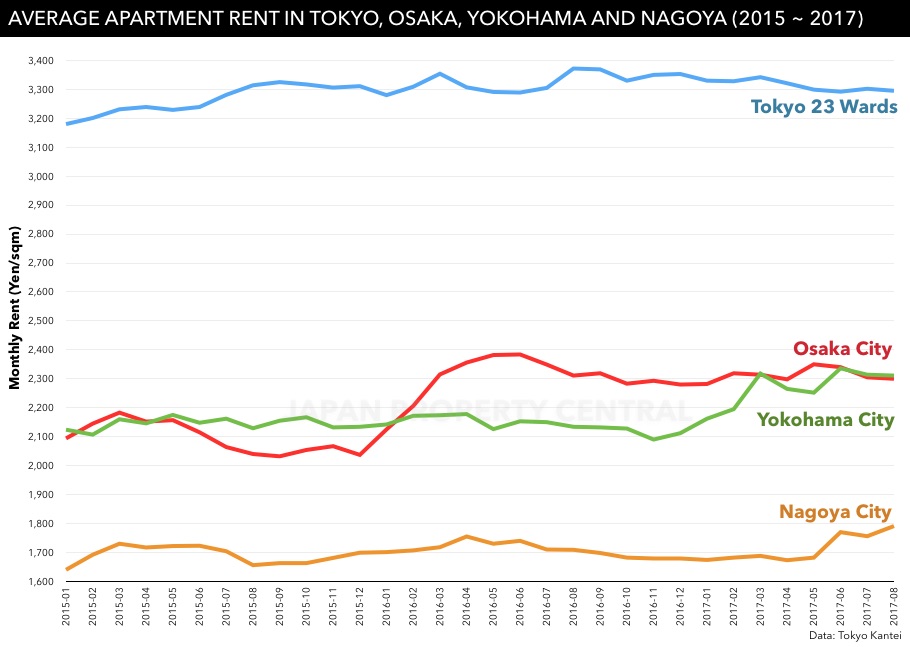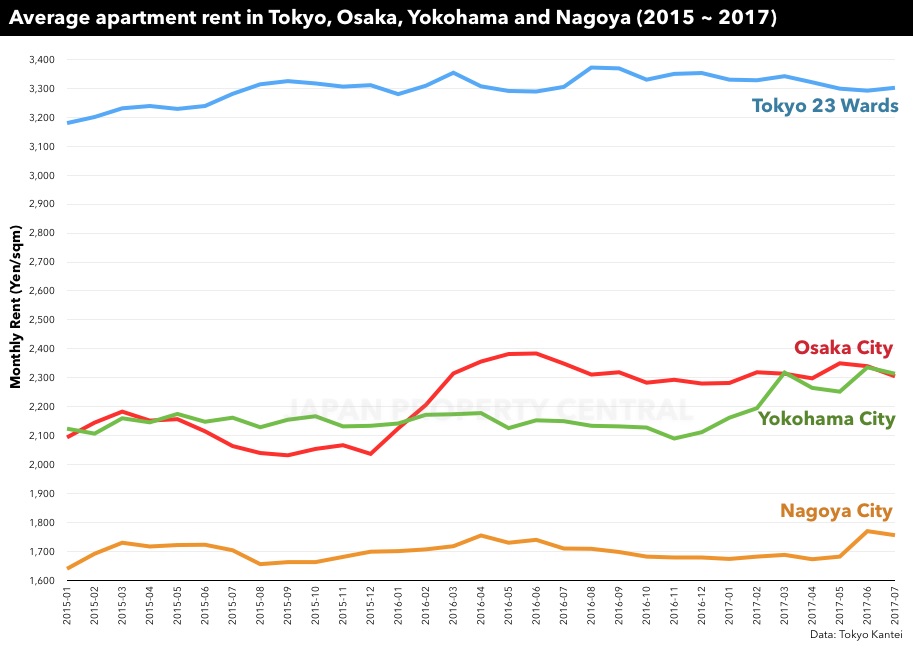Tokyo apartment rents hit new high in February

In February, the average rent of an apartment in Tokyo's 23 wards was up 1.1% from last year, according to Tokyo Kantei.
Apartment rents in Tokyo remain flat throughout pandemic

Unlike some other major cities across the world, average apartment rents in Tokyo have remained somewhat flat throughout the pandemic with little volatility.
How has Tokyo's rental market changed since the pandemic

News reports are still coming out about an exodus from Tokyo as the coronavirus pandemic continues, but has this had any effect on the real estate market in Tokyo’s 23 wards?
Tokyo apartment rents drop across all size ranges

According to the latest data on the residential rental market provided by AtHome, the average advertised rent across all four apartment types saw a year-on-year decline in Tokyo’s 23 wards.
Average apartment rent down in greater Tokyo

According to Tokyo Kantei, the average monthly rent of a condominium-type apartment across greater Tokyo in August was 2,628 Yen/sqm, down 0.1% from the previous month and down 1.2% from last year. The average apartment size was 59.74 sqm and the average building age was 21.1 years.
Apartment occupancy rates reach record high in Japan

The average occupancy rate of rental apartment buildings acquired by J-REITs has been steadily improving since 2010 and has exceeded levels last seen during the peak in 2008. In the second half of 2016 the average occupancy rate was 96%, a record high.
This is due both to an improving property market and REITS acquiring relatively new buildings in prime, central locations. While occupancy rates remain high in Tokyo, other cities across the country are seeing a reversal with a declining trend evident since 2013.
Trends in cities other than Tokyo:
- Sapporo: Although occupancy levels are relatively high, they have been decreasing since late 2014.
- Sendai: Occupancy rates reached record highs due to housing demand following the Tohoku disaster in 2011, but have been slowly falling. Sendai has seen the highest decline of all cities.
- Yokohama: Occupancy has been falling since mid-2013, although there was an improvement in the second half of 2016.
- Nagoya: Occupancy rates have been falling since 2013 and are sitting at a comparatively low level.
- Osaka: Occupancy rates have been improving since late 2015 and are at a relatively high level.
- Fukuoka: Occupancy rates have been steadily falling. The rate of decline has been influenced by a building with an occupancy rate of less than 80%.

*Central Tokyo 5 wards: Chiyoda, Chuo, Minato, Shinjuku, Shibuya.
Source: Mizuho Real Estate Market Report, July 14, 2017.
Average apartment rent in July 2017

According to Tokyo Kantei, the average monthly rent of a condominium-type apartment across greater Tokyo in July 2017 was 2,631 Yen/sqm, up 0.5% from the previous month but down 0.8% from last year. The average apartment size was 60.03 sqm and the average building age was 20.8 years.
In the Tokyo metropolitan area the average monthly rent was 3,141 Yen/sqm, up 0.4% from the previous month but down 0.1% from last year. The average apartment size was 57.19 sqm and the average building age was 19.1 years.
In Tokyo’s 23 wards, the average monthly rent was 3,302 Yen/sqm, up 0.3% from the previous month but down 0.1% from last year. The average apartment size was 56.56 sqm and the average building age was 18.3 years.
